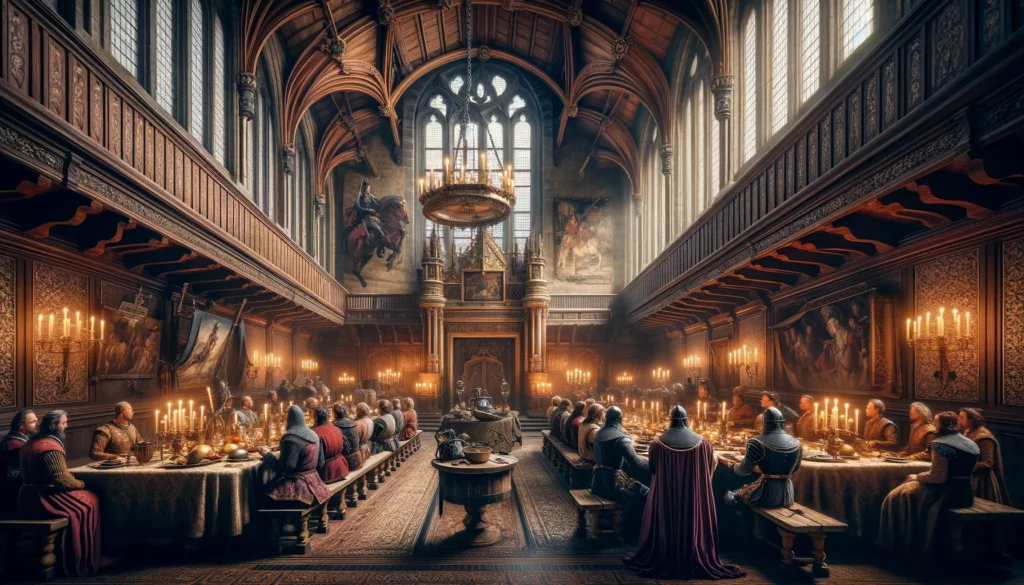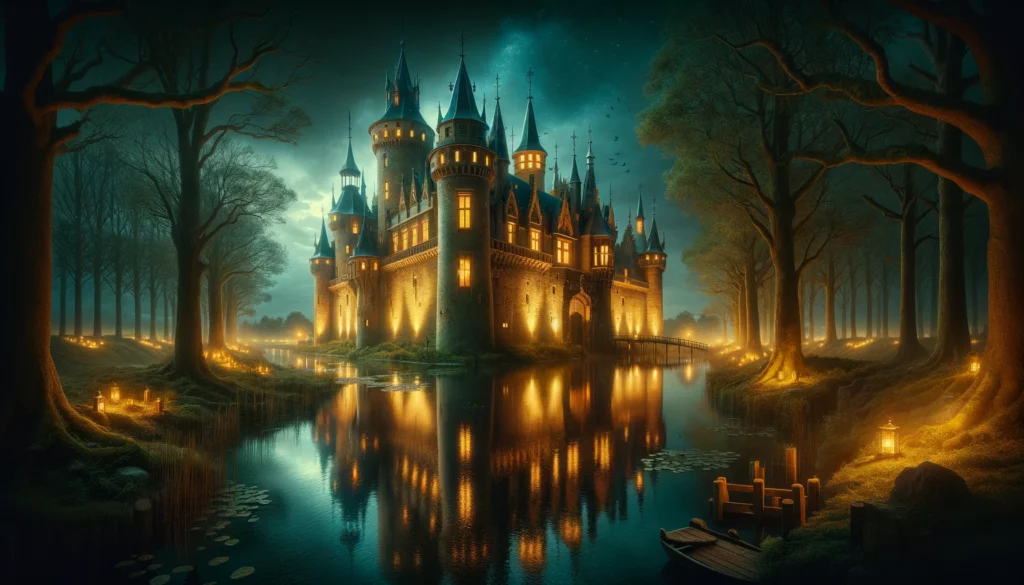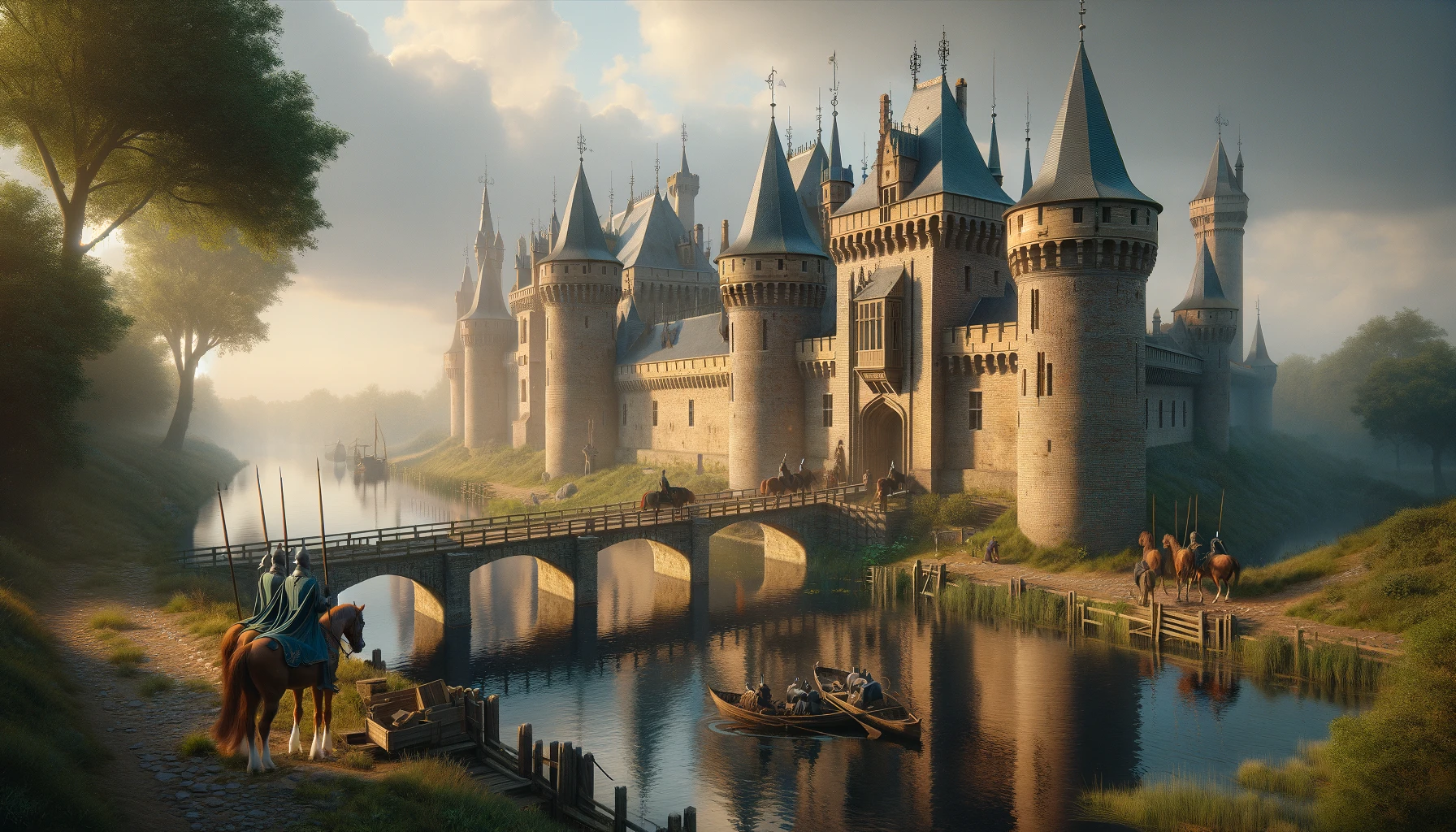Castles have captured the imagination for centuries; these impressive structures were not only the homes of nobles and knights, but also crucial defensive strongholds. In this blog, we dive into the architecture of castles and discover how they were built and used by knights.
The Development of Castle Architecture
The evolution of castle architecture began in the 9th and 10th centuries with motte-and-bailey castles, made of wood and built on earthen mounds. These early castles provided basic protection and were relatively easy to construct. The introduction of stone in the 12th century transformed castle building, leading to the construction of more imposing and durable structures.
Architectural Characteristics
Characteristic elements of castle architecture include high walls, towers, drawbridges and battlements. Towers served multiple purposes: they provided a vantage point to guard the surrounding area and reinforced the castle’s defenses. Drawbridges and moats were effective means of keeping intruders at bay.
Construction Techniques and Materials of Castles
Building a castle was a huge undertaking. Natural stone was the main building material, chosen for its durability and defensive capabilities. Masonry required specialized skills, which made building castles both time-consuming and costly.
Daily Life in a Castle
These buildings were vibrant centers of medieval life, with a complex hierarchy and daily routines. Knights, as important residents, had crucial roles in both the defense and management of the castle and surrounding lands.
The Role of Knights
Knights were trained warriors, often of noble birth, who dedicated their lives to the service of their lord or king. In addition to their military duties, knights were also involved in the administration of the country and law enforcement within the domain at the fort.
Training and Equipment
A knight’s training began at an early age and included both physical and strategic training. Their equipment, including armor, swords and lances, was essential to their role in battles. they served as both home and training center for knights, complete with practice fields and armories.
Strategic Functions of Castles
Castles were not just residential buildings; they were also strategic defensive structures that protected local people and served as centers of power.
Defense Strategies
The location of a fort was carefully chosen for optimal defense; often on hilltops or near waterways. Architectural elements such as loopholes, wall walks and portcullises were designed to repel attackers and give defenders an advantage.
Sieges and Warfare
Castles were often the scene of sieges, with attackers trying to breach the defenses. The development of siege technologies, such as catapults and battering rams, forced castle architects to constantly adapt their designs to resist new threats.
Conclusion of Castle Architecture
Castle architecture is a fascinating blend of aesthetic beauty, military strategy and historical evolution. From the early motte-and-bailey structures to the imposing stone forts, have stood the test of time as symbols of power, protection and technological advancement. The architectural elements such as high walls, towers, and drawbridges were not only functional in their defense against enemy attacks, but also served as status symbols for the ruling nobility and knights.
The role of the knight within the walls of these castles was multifaceted. They were not only the defenders of the land and protectors of the monarch, but also central figures in the social hierarchy of the castle. Their training, equipment, and daily life within the castle walls reflect the complexity of medieval societies and the crucial role castles played in both war and peace.
Today’s fascination with castles goes beyond their historical and architectural significance. They are windows to the past, giving us insight into the lifestyles, technologies and cultures of earlier generations. By studying the architecture and the knights who inhabited them, we gain a deeper understanding of the Middle Ages and the lasting influence this period has on our contemporary culture and architecture.
In conclusion, castles and their inhabitants offer us a rich source of knowledge and inspiration. They remind us of the human drive for security, prestige, and community. As monuments of the past, they continue to fascinate us with their stories, designs, and the indelible traces they have left in the history of human civilization.




Leave a Reply